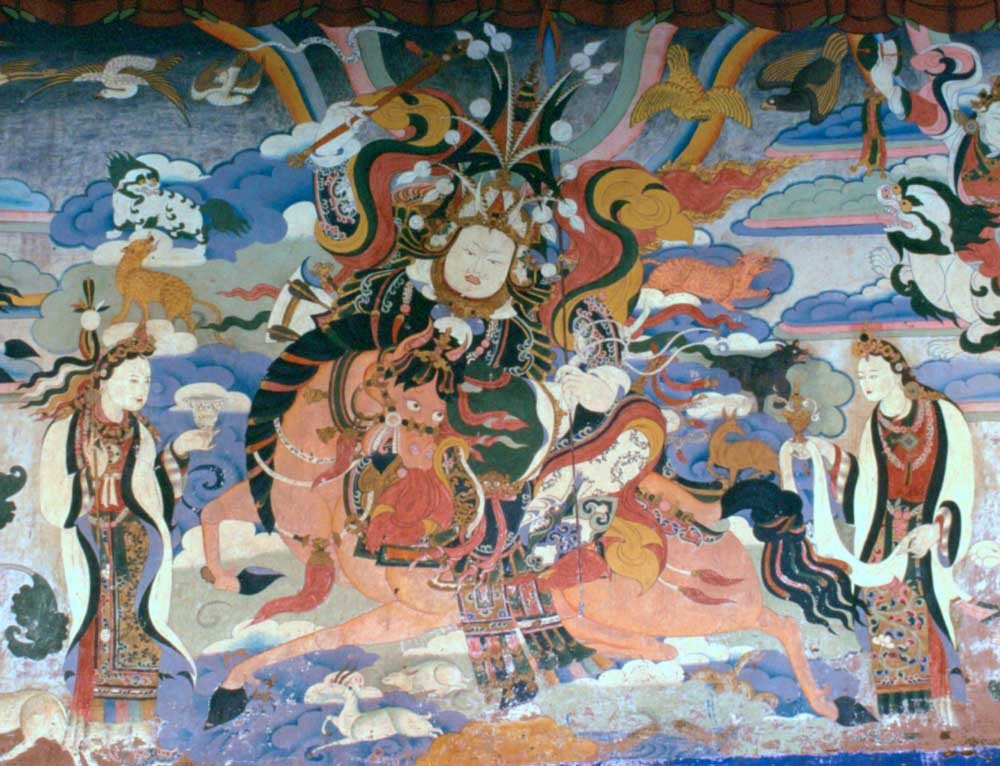Legendary Epic Of King Gesar Who Descended From Heaven And The Ancient Tarna Monastery
A. Sutherland - AncientPages.com - It took several years to fully restore an ancient Tibetan Buddhist Tarna Monastery in Northwest China's Qinghai province. It was damaged after a 7.1-magnitude earthquake in Yushu Tibetan autonomous prefecture on April 14, 2010. Still, this important historical building was renovated some years ago.
Monument of legendary Tibetan hero Gesar of Ling in Yushu City, Qhinghai. Credit: Mario Biondi writer - CC BY-SA 4.0
The Tarna Monastery, located in Nangchen county in Yushu Tibetan autonomous prefecture, is an ancient Tibetan monastery built in the 11th Century.
The monastery is related to Gesar, a legendary warrior ruler and hero of the Tibetans mentioned in an 11th-century ballad about a half-human, half-god Tibetan king. Gesar of the Kingdom of Ling conquered the devils of other tribes and sought to help ordinary people. He waged war with the nearby Kingdom of Hor, lived without fear of his formidable enemies, subdued monsters, helped the poor, controlled the strong, and benefited the ordinary people.
Talking about Tibetan culture, something you can't miss is the ballad called "King of Gesar," a legendary folk epic - regarded as one of the longest poems - that has been popular in Northwestern and Northern China for hundreds of years.
The Epic of King Gesar - the Orient's Homeric Epic - is deeply rooted in folklore and oral tradition from the Tibetan generations. In 1716, the Epic of King Gesar was ordered to be translated from Tibetan by the Qing Emperor. It is considered the most extended literary work in the world, consisting of over 120 volumes and 20 million words in more than 1 million verses.
In The Song of King Gesar, written by Alai, the adventures of this legendary King are beautifully described as the reader travels to foreign lands and learns the significance of this great epic. King Gesar's story begins in "Gling, which is present-day Khampapa. To be more precise, the Gling of the past is now part of the immense land named Kham- papa.
Its grasslands are shaped like an enormous drum, the plateau encircling a slight rise in the middle. Sometimes you can almost hear surging drumbeats or a pounding heart inside. Snowcapped mountains circle the grasslands, like fierce beasts galloping at the sky's edge.
In those days, people felt the earth was big enough to contain many different worlds. We speak now of the land as a village, but back then, people looked towards the sky's edge and wondered if there might be more worlds beyond the horizon – wickeder than theirs, perhaps, or more prosperous.
The Song of King Gesar is one of the world's great epics, as significant for Tibetans as the Odyssey and Iliad were for the ancient Greeks. Passed down in song from one generation to the next, it is sung by Tibetan bards even today. Set partly in ancient Tibet, where evil spirits mingle with the lives of humans, and partly in the modern day, the tale tells of two lives inextricably entwined.
Gesar, the youngest and bravest of the gods, has been sent down to the human world as an infant king to defeat the demons that plague the lives of ordinary people. Jigmed is a young shepherd who is visited by dreams of Gesar, of gods, and of ancient battles while he sleeps. So begins an epic journey for both the shepherd and the king. Gesar grows from a willful child of the gods into the warrior-king of Ling, and will unite the nation of Tibet under his reign. Jigmed will learn to see his troubled country with new eyes and, as the storyteller chosen by the gods, must face his own destiny. Read more
Gling was a small world; its people were divided into clans. Those peoples cultivated the seeds of many plants; they smelted gold, silver, copper, iron, featherweight mercury¨, and heavy lead.
By the time the newly enlightened inhabitants of Gling began to separate domesticated horses from wild ones, other worlds had long since left behind the age of barbarism.
They erected statues; they wove hemp and silk; they became civilized. They believed they had destroyed all the demons – or, at least, if there were still demons, they were hidden in human hearts, scurrying around in human blood, laughing like hyenas.
But in Gling, the curtain was about to rise in a battle between humans, deities, and demons.
The people of Gling began to pursue wealth – pastures, palaces, treasure, and, for the men, beautiful women. Tyrants fought one another for power, and life in Gling became a struggle between the noble and the lowly, the powerful and the powerless. An unlucky shadow shrouded their eyes as desire burned in their hearts, just as rivers, wishing to flow beyond their beds, are muddied as they rush against their banks. The people of Gling believed that an evil wind had blown the demons into their world to destroy Gling's peace.
Mural depicting King Gesar of Ling. Credit: Gruschke - CC BY-SA 3.0 DE
Who could have blown the evil wind their way? They were not expected to ask – if they did, the sages might look foolish. They could ask: Where did the demons come from? And the answer would be: They came with the evil wind.
Once the evil wind began to blow, dark clouds covered the bright sky. The grass of the pastures yellowed. War horns echoed over the grasslands and among the snow-capped mountains.
Worst of all, the kindly were revealed as wicked, and it became impossible for the people of Gling to live in harmony.
It was to these grasslands, riven with the cries of battle, that King Gesar descended from Heaven." 1
There used to be a lot of folk artists in Tibet who could recite the entire work or large portions. Altogether, "King of Gesar" contains more than 120 episodes. But over time, fewer local musicians can sing the crowning masterpiece of Tibetan folk literature.
The Epic of King Gesar, listed as a World Intangible Cultural Heritage item by UNESCO, is considered a masterpiece of Tibetan folk literature.
There are also 31 towers on the hillside beside the monastery, standing for Gesar and his 30 generals. The towers and an ancient Buddhist Hall in the sanctuary were seriously damaged in the earthquake.
Renovation work on the monastery was launched in 2011. Since the monastery is located at a high altitude, it took several years to restore its original appearance fully.
Written by – A. Sutherland - AncientPages.com Senior Staff Writer
Updated on November 28, 2023
Copyright © AncientPages.com All rights reserved. This material may not be published, broadcast, rewritten or redistributed in whole or part without the express written permission of AncientPages.com
Expand for referencesMore From Ancient Pages
-
 Teutonic Knights – Facts And History About The Christian Military Order
Featured Stories | Feb 21, 2019
Teutonic Knights – Facts And History About The Christian Military Order
Featured Stories | Feb 21, 2019 -
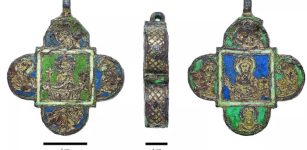 Bone Fragments Found Inside Mysterious Medieval Pendant
Archaeology | Jan 5, 2023
Bone Fragments Found Inside Mysterious Medieval Pendant
Archaeology | Jan 5, 2023 -
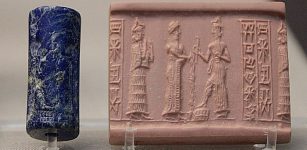 Shamash: Mesopotamian God Of Sun, Truth, Justice And Healing
Featured Stories | Jan 11, 2016
Shamash: Mesopotamian God Of Sun, Truth, Justice And Healing
Featured Stories | Jan 11, 2016 -
 Mother, Father, Child, Marriage And Divorce In Viking Society
Ancient History Facts | Apr 27, 2020
Mother, Father, Child, Marriage And Divorce In Viking Society
Ancient History Facts | Apr 27, 2020 -
 Bulgaria’s Aquae Calidae Spa Complex: More 40 Coins Dated To 4th Century CE – Found
Archaeology | Jul 24, 2020
Bulgaria’s Aquae Calidae Spa Complex: More 40 Coins Dated To 4th Century CE – Found
Archaeology | Jul 24, 2020 -
 Remarkable Archaeological Discoveries Made Near Bratislava, Slovakia
Archaeology | Oct 28, 2023
Remarkable Archaeological Discoveries Made Near Bratislava, Slovakia
Archaeology | Oct 28, 2023 -
 On This Day In History: Noah Webster, Jr. “Father Of American Scholarship And Education” Was Born – On Oct 16, 1758
News | Oct 16, 2016
On This Day In History: Noah Webster, Jr. “Father Of American Scholarship And Education” Was Born – On Oct 16, 1758
News | Oct 16, 2016 -
 Pryor Mountains Are Home To The Mysterious Little People – Native Americans Say
Featured Stories | Aug 2, 2021
Pryor Mountains Are Home To The Mysterious Little People – Native Americans Say
Featured Stories | Aug 2, 2021 -
 London’s Underground Rivers Were Deliberately Hidden
Featured Stories | Oct 8, 2018
London’s Underground Rivers Were Deliberately Hidden
Featured Stories | Oct 8, 2018 -
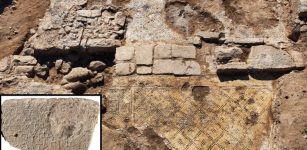 1,500-Year-Old Inscription ‘Christ, Born Of Mary’ Engraved On Magnificent Building Discovered In Israel
Archaeology | Jan 21, 2021
1,500-Year-Old Inscription ‘Christ, Born Of Mary’ Engraved On Magnificent Building Discovered In Israel
Archaeology | Jan 21, 2021 -
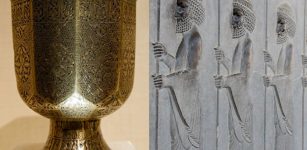 Cup Of Jamshid – Holy Grail Of Ancient Persia Offered Immortality And Visions Of The Future
Featured Stories | Jan 16, 2019
Cup Of Jamshid – Holy Grail Of Ancient Persia Offered Immortality And Visions Of The Future
Featured Stories | Jan 16, 2019 -
 Two-Million-Year-Old DNA Opens A ‘Game-Changing’ New Chapter In The History Of Evolution
Archaeology | Dec 7, 2022
Two-Million-Year-Old DNA Opens A ‘Game-Changing’ New Chapter In The History Of Evolution
Archaeology | Dec 7, 2022 -
 ‘Giant’ Ant Fossil Raises Questions About Ancient Arctic Migrations
Fossils | Mar 8, 2023
‘Giant’ Ant Fossil Raises Questions About Ancient Arctic Migrations
Fossils | Mar 8, 2023 -
 Researchers Study Human Mobility At The Bronze Age City Of Alalakh, Turkey
Archaeology | Jul 1, 2021
Researchers Study Human Mobility At The Bronze Age City Of Alalakh, Turkey
Archaeology | Jul 1, 2021 -
 Child Finds Impressive 1,800-Year-Old Ring Engraved With Goddess Minerva On Mount Carmel, Israel
Archaeology | Jul 17, 2024
Child Finds Impressive 1,800-Year-Old Ring Engraved With Goddess Minerva On Mount Carmel, Israel
Archaeology | Jul 17, 2024 -
 10 Surprising Facts About The Neanderthals Who Were Not As Primitive As Previously Thought
Ancient History Facts | May 6, 2017
10 Surprising Facts About The Neanderthals Who Were Not As Primitive As Previously Thought
Ancient History Facts | May 6, 2017 -
 Bizarre Story Of Scottish Penkaet Castle
Featured Stories | Apr 18, 2020
Bizarre Story Of Scottish Penkaet Castle
Featured Stories | Apr 18, 2020 -
 Submerged Wreck Of Mayan Slave Ship Identified By INAH Researchers
Archaeology | Sep 23, 2020
Submerged Wreck Of Mayan Slave Ship Identified By INAH Researchers
Archaeology | Sep 23, 2020 -
 Ptolemaic-Era Warship Discovered Near The Sunken City Of Heracleion In Alexandria By Underwater Archaeologists
Archaeology | Jul 20, 2022
Ptolemaic-Era Warship Discovered Near The Sunken City Of Heracleion In Alexandria By Underwater Archaeologists
Archaeology | Jul 20, 2022 -
 Hidden Inca Water System Beneath The Machu Picchu Jungle Discovered By LIDAR
Archaeology | Mar 11, 2022
Hidden Inca Water System Beneath The Machu Picchu Jungle Discovered By LIDAR
Archaeology | Mar 11, 2022



